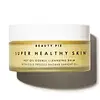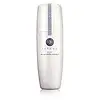What's inside
What's inside
 Key Ingredients
Key Ingredients

 Benefits
Benefits

 Concerns
Concerns

 Ingredients Side-by-side
Ingredients Side-by-side

Propanediol
SolventGlycerin
HumectantEthylhexyl Palmitate
EmollientPolyglyceryl-10 Laurate
Skin ConditioningPolyglyceryl-10 Behenate/Eicosadioate
EmulsifyingPPG-9 Diglyceryl Ether
Skin ConditioningGlyceryl Stearate Se
EmulsifyingGlyceryl Behenate/Eicosadioate
EmollientBeeswax
Emulsion StabilisingPhenoxyethanol
PreservativeAdansonia Digitata Seed Oil
EmollientButylene Glycol
HumectantOryza Sativa Bran Oil
EmollientGlucosylrutin
AntioxidantWater
Skin ConditioningLithospermum Erythrorhizon Root Extract
Skin ConditioningAloe Barbadensis Leaf Extract
EmollientPropanediol, Glycerin, Ethylhexyl Palmitate, Polyglyceryl-10 Laurate, Polyglyceryl-10 Behenate/Eicosadioate, PPG-9 Diglyceryl Ether, Glyceryl Stearate Se, Glyceryl Behenate/Eicosadioate, Beeswax, Phenoxyethanol, Adansonia Digitata Seed Oil, Butylene Glycol, Oryza Sativa Bran Oil, Glucosylrutin, Water, Lithospermum Erythrorhizon Root Extract, Aloe Barbadensis Leaf Extract
 Reviews
Reviews

Ingredients Explained
These ingredients are found in both products.
Ingredients higher up in an ingredient list are typically present in a larger amount.
Glycerin is already naturally found in your skin. It helps moisturize and protect your skin.
A study from 2016 found glycerin to be more effective as a humectant than AHAs and hyaluronic acid.
As a humectant, it helps the skin stay hydrated by pulling moisture to your skin. The low molecular weight of glycerin allows it to pull moisture into the deeper layers of your skin.
Hydrated skin improves your skin barrier; Your skin barrier helps protect against irritants and bacteria.
Glycerin has also been found to have antimicrobial and antiviral properties. Due to these properties, glycerin is often used in wound and burn treatments.
In cosmetics, glycerin is usually derived from plants such as soybean or palm. However, it can also be sourced from animals, such as tallow or animal fat.
This ingredient is organic, colorless, odorless, and non-toxic.
Glycerin is the name for this ingredient in American English. British English uses Glycerol/Glycerine.
Learn more about GlycerinGlyceryl Behenate/Eicosadioate isn't fungal acne safe.
Oryza Sativa Bran Oil comes from the outer layer of a rice kernel. It is a byproduct of milling rice, or the operation to produce a whole grain rice product.
This ingredient has emollient and skin conditioning properties. This is due to its polysaccharides and omega-3 fatty acids.
Emollients help soothe and soften the skin. It does this by creating a protective film on your skin. This barrier helps trap moisture and keeps your skin hydrated.
Learn more about Oryza Sativa Bran OilPhenoxyethanol is a preservative that has germicide, antimicrobial, and aromatic properties. Studies show that phenoxyethanol can prevent microbial growth. By itself, it has a scent that is similar to that of a rose.
It's often used in formulations along with Caprylyl Glycol to preserve the shelf life of products.
Water. It's the most common cosmetic ingredient of all. You'll usually see it at the top of ingredient lists, meaning that it makes up the largest part of the product.
So why is it so popular? Water most often acts as a solvent - this means that it helps dissolve other ingredients into the formulation.
You'll also recognize water as that liquid we all need to stay alive. If you see this, drink a glass of water. Stay hydrated!
Learn more about Water